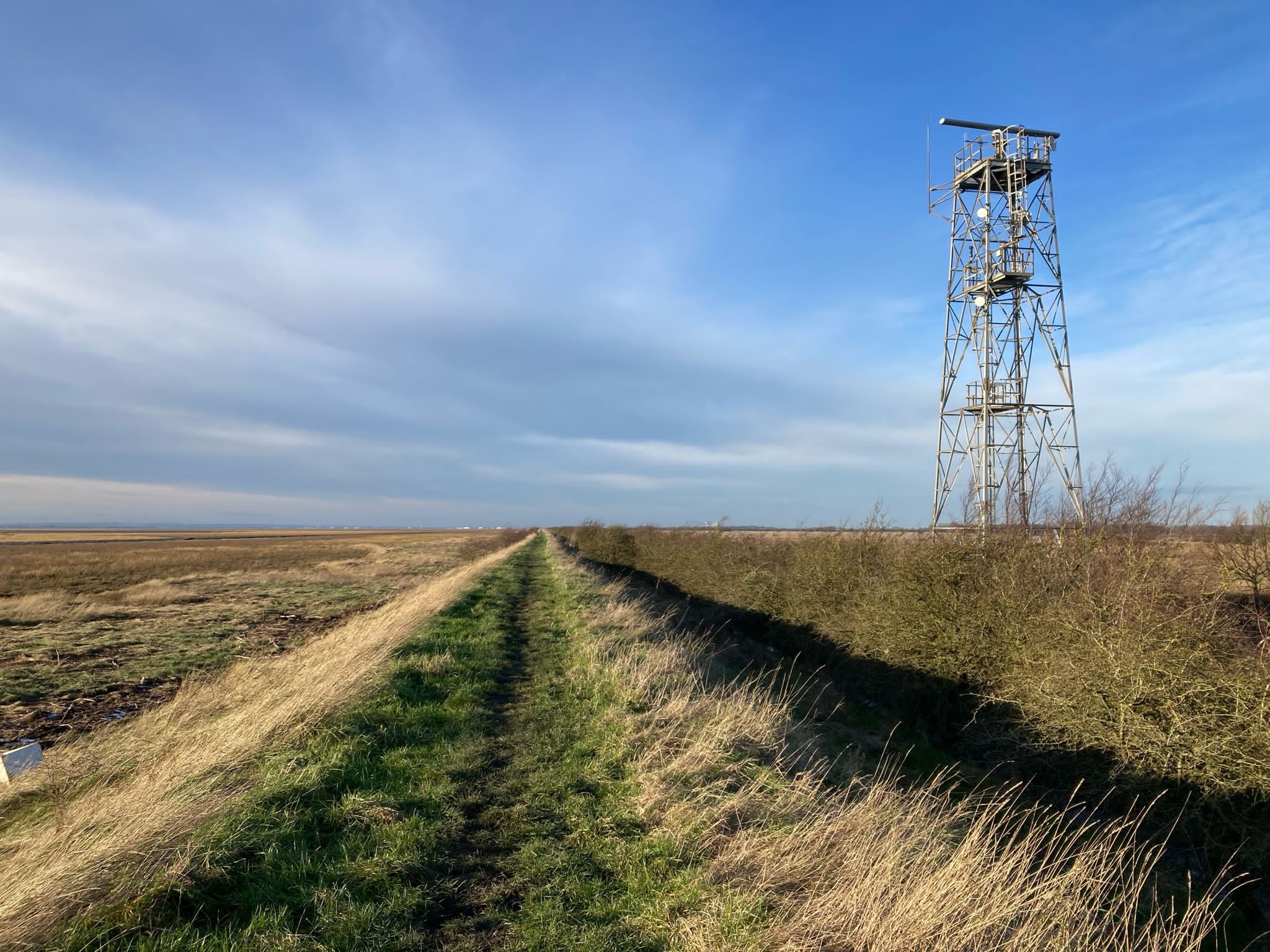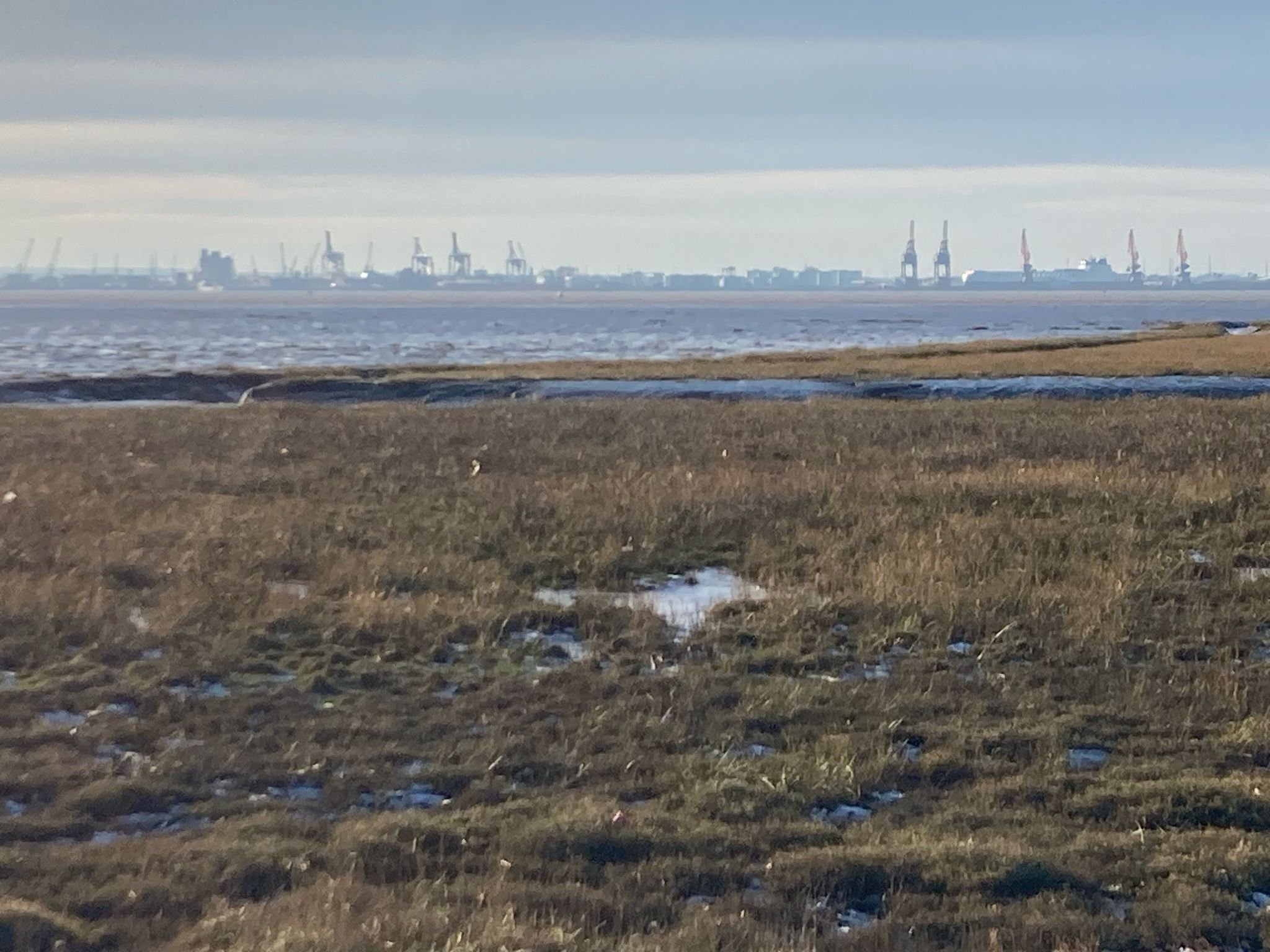Deceiving the Luftwaffe: How Hull’s decoy docks saved countless lives
ELABORATE TRICK: The saltmarsh where decoy targets were created, with the real Hull docks in the distance
Now & Then, a column by Angus Young
The top secret plan to protect city from Nazi bombs
A remote stretch of saltmarsh on the banks of the Humber might seem like an unlikely setting for one of the greatest magic tricks of the 20th century.
Yet it’s the place where an illusion act was staged on an epic scale saving countless lives in the process.
Today the riverbank near Stone Creek is a quiet spot known as Cherry Cobb Sands. It’s popular with birdwatchers and the occasional dog walker. On a clear day you can even pick out Grimby’s Dock Tower standing tall across the estuary.
However, back in 1941 it was the focus for a top secret plan masterminded by a retired ex-Royal Air Force Chief Engineer nicknamed ‘Conky’, and conceived with the help of film industry technicians with a specialist knowledge of lighting and set design.
The night of March 18 that year saw the heaviest bombing raid Hull had experienced so far in the Second World War. For nearly seven hours sirens sounded, bombs fell and anti-aircraft guns blazed as the sound of aircraft engines roared overhead.
Hull’s docks were the target as they would be again over two nights in May when around 450 people were killed during what would prove to be the most intensive aerial attacks on Hull during the war.
By then plans were already being drawn up to trick Luftwaffe crews into dropping their bombs before reaching Hull by building a series of decoy docks to the east of the city.
Such was the secrecy surrounding the decoy work of a special unit created by the Air Ministry that it was never given a formal title. Instead it was simply known as Colonel Turner’s Department after the man at its helm.
At the start of the war in September 1939, John Turner, the ministry’s head of works and buildings, was persuaded to come out of retirement to establish a network of decoys to mislead enemy bombers.
Originally commissioned in the Royal Engineers in 1900, Turner served across the Middle-East and Asia designing and supervising the construction of numerous infrastructure projects, including a major bridge in Mosul in Iraq before becoming the RAF’s Chief Engineer in India between 1928 and 1931.
A qualified pilot with a natural eye for the built environment, he was the ideal man for the job.
Turner eventually based his operation at Shepperton Film Studios and used technicians there to build a series of elaborate decoys, initially concentrating on fake airfields with dummy aircraft.
Seven airfields were built in East Yorkshire, all designed to divert attention away from operational RAF bases at Driffield, Leconfield, Catfoss and Holme on Spalding Moor.
Following the bombing of Coventry in 1940 it became clear the Germans had switched from military to civilian targets and Turner was tasked with creating decoys for seven cities including Hull.
These would feature the construction of mocked-up buildings resembling factories, railway yards and even dummy roads complete with street lights. Special lighting effects borrowed from the film industry would mimic burning factory furnaces or windows ‘accidentally’ left open on some of the buildings.
MASTERMIND: Colonel John Turner. Picture credit: English Heritage
His challenge in Hull was to go one step further, by creating the equivalent of a fake city waterfront.
The decoy structures on the Humber foreshore were created by constructing dozens of small concrete ponds in the marshy waters of Cherry Cobbs Sands. Each pond had a light mounted on a three metre-high wooden pole to mirror necessary navigational lighting on jetties and wharfs which stayed on during night-time blackouts.
By having light beams directed into the water, the illuminated ponds gave the impression of lighting around the perimeter of a real dock.
Typically measuring 30ft by 16ft, most of the ponds were rectangular but some were triangular to mirror the internal angles of a dock while others were designed to represent a dock entrance.
As an example, the fake King George Dock was made up of 16 different ponds. Some are still just about visible today along with a single wooden pole defiantly standing upright.
DEVASTATION: King Edward Street in the city centre after a Second World War bombing raid
Although only a third of the size of the actual docks, it was hoped the decoys would be convincing enough to look like the real thing at high altitude. The deception worked. Captured Luftwaffe pilots later confirmed most bombing raids on ports like Hull relied almost entirely on seeking out lighting below rather than aiming for specific targets.
In a letter, Turner wrote: “There appears to be considerable evidence that many of the enemy pilots appear to be lost and to be inclined to bomb anything they can see, especially lights.”
Decoys of Victoria Dock and Alexandria Dock were also built along with another remarkable fake – a simulation of the River Hull.
The real river was another significant landmark for the German bombers to search for at night, so two existing open drains running parallel with each other before reaching the Humber at Cherry Cobb Sands were dammed to flood the area between them to resemble the river.
Another real-life waterway – Holderness Drain – was also replicated in miniature using three rectangular concrete ponds.
The decoy site was manned by Royal Navy personnel who operated the lighting from a specially-built shelter close to a farm. Still intact today, it’s built from brick and is protected by earth banking and a flat concrete roof.
Inside, two rooms sit either side of an entrance protected by a blast wall. One room originally housed diesel-powered electricity generators and switchgear for the lights. The other room provided cramped accommodation for the crew and acted as a bomb shelter with an emergency escape hatch in the roof.
The courage of the men who occupied this command post should not be underestimated. They were literally drawing fire away from the docks and onto themselves in an otherwise deserted landscape.
Turner’s decoy docks on the Humber were not his department’s only attempts to confuse German pilots into dropping their bombs before reaching Hull.
So-called Starfish sites were created at Paull Holme, Bilton, Ganstead, Thorngumbald and Aldbrough. These were designed to simulate a bombed or burning target and typically consisted of a series of large wooden-framed baskets piled high with creosote-soaked wood off-cuts and other flammable material.
Some would also feature oil-filled troughs which, after being set alight, would be flushed with water or more oil to create violent explosions with flames reaching 40ft into the air to simulate the detonation of a bomb.
The decoy docks at Cherry Cobb Sands were completed in August 1941 at exactly the moment Hitler decided to shift the focus of Germany’s war effort to the Russian front. As a result, the frequency of bombing raids on Britain slowly reduced.
Even so, they remained operational until 1944 and undoubtedly spared Hull from an even greater pounding during subsequent air raids. It’s estimated around ten per cent of the total number of bombs dropped on Britain during the war were mistakenly directed at decoy sites.
Turner’s work stayed secret long after the war as official government information about his network of over 1,000 decoy sites across the UK remained classified until the early 1970s. Even afterwards, many of the so-called ‘decoy men’ who worked on the sites were reluctant to talk about them.
In 2001 what remains of the Hull decoy docks were designated as a nationally important scheduled monument by Historic England.
Eighty years since Hull’s dock decoys were stood down, Mother Nature is slowly reclaiming them. Thanks to erosion, some have disappeared altogether into the Humber.
Up on the riverbank, the surviving ponds shimmer in the distance like strips of silver in the sunlight. The urgent need for man-made lighting to fool enemy aircraft is thankfully long gone.
Become a Patron of The Hull Story. For just £2.50 a month you can help support this independent journalism project dedicated to Hull. Find out more here








